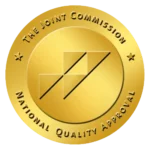In the realm of drug treatment, the search for effective interventions to combat addiction has been ongoing. Among the pharmaceutical aids, Suboxone has emerged as a beacon of possibility, offering a unique approach to managing opioid addiction and facilitating recovery.
In this blog, we embark on an enlightening journey into Suboxone, unraveling its multifaceted role in drug treatment. From understanding its treatment procedure to exploring its potential side effects, we aim to provide an inclusive overview that sheds light on its significance in addiction recovery.

Key Takeaways
Suboxone is a medication that combines buprenorphine and naloxone and is used to treat opioid addiction. The article will cover:
- Suboxone plays a crucial role in drug treatment by helping individuals manage withdrawal symptoms and cravings.
- Suboxone treatment involves several stages to manage opioid addiction effectively.
- Understanding misconceptions about Suboxone is crucial for informed decision-making and effective treatment.
The Haven Detox-Little Rock provides extensive services to treat various types of addiction. Call us at (501) 271-3342 for details.
Overview Of Suboxone
Suboxone is an effective medication used to treat opioid addiction. It’s a combination of two active ingredients: buprenorphine and naloxone. Buprenorphine attaches to the brain receptors that heroin or painkillers target. However, unlike these opioids, it creates less euphoria while easing withdrawal symptoms. Naloxone is included to deter misuse; if Suboxone is injected, the naloxone can block the effects of opioid drugs and precipitate withdrawal symptoms.
The purpose of Suboxone is to help individuals overcome opioid dependence by reducing cravings. It allows them to focus on their recovery without the intense drive to use opioids. It’s often part of a comprehensive treatment program that includes counseling and behavioral therapy. Suboxone is usually taken once a day as a dissolvable tablet or film placed under the tongue, and its effectiveness can help individuals gradually taper off opioids or maintain abstinence from them altogether.
Overall, Suboxone plays a vital role in medication-assisted treatment (MAT) for opioid addiction, offering a safer alternative to illicit opioids while providing support during the recovery process. It can improve the quality of life for individuals struggling with opioid dependence by helping them regain stability and control over their lives. However, Suboxone needs to be used as part of a complete treatment plan under the supervision of medical professionals to ensure its effectiveness and safety.
Role Of Suboxone In Drug Treatment
Suboxone is a prescription drug medication used in the treatment of opioid use disorder (OUD). By providing a bridge to recovery, Suboxone not only supports individuals in achieving sobriety but also improves overall health outcomes. It reduces the social and economic burden associated with opioid misuse. Here’s an overview of the role of Suboxone in drug treatment:
Opioid Addiction Treatment
Suboxone, as part of medication-assisted treatment (MAT), is integrated into comprehensive programs that often include support groups, psychotherapies, and behavioral therapies to address the multifaceted nature of addiction. MAT has been shown to improve treatment retention, reduce opioid use, and decrease criminal activity. It improves the overall health of individuals with opioid addiction.
Detoxification Using Suboxone
Suboxone assists in detoxifying individuals from opioid dependence by managing severe withdrawal symptoms effectively. Administered under medical supervision, it helps individuals taper off opioids gradually, minimizing discomfort and promoting a safer detox process. Regular monitoring ensures optimal treatment outcomes and reduces the risk of relapse during detoxification.
Reduced Cravings And Withdrawal Symptoms
Suboxone’s ability to lessen opioid withdrawal symptoms and reduce cravings plays a pivotal role in early recovery. It allows people to focus on rebuilding their lives without the constant distraction of opioid cravings. By stabilizing brain chemistry, Suboxone provides a sense of normalcy and allows individuals to regain control over their thoughts and behaviors, laying the foundation for long-term sobriety.
Harm Reduction
Beyond its role in addiction treatment, Suboxone contributes to broader harm reduction efforts by reducing the spread of infectious diseases such as HIV and hepatitis C, which are commonly associated with injection drug use. By providing a safer alternative to opioids, Suboxone helps prevent opioid overdose deaths and adverse health outcomes, thereby reducing the burden on healthcare systems.
Integrated Treatment Approach
The integration of Suboxone into a treatment plan acknowledges the intricate interplay between biological, psychological, and social factors in addiction. Integrated treatment emphasizes the importance of addressing underlying mental health issues, trauma, and social determinants of health. By combining main medications with evidence-based therapies such as cognitive-behavioral therapy (CBT) and motivational interviewing (MI), integrated treatment maximizes the likelihood of long-term recovery.
Accessibility
Suboxone’s availability and its flexible dosing options contribute to its accessibility for individuals seeking treatment for opioid addiction. This accessibility reduces barriers to entry into treatment, enabling more people to access the care they need to overcome addiction. Suboxone can also be provided in various healthcare settings, including primary care clinics and community health centers.
Suboxone Treatment Procedure
The procedure for Suboxone treatment, also known as medication-assisted treatment (MAT), is a structured approach designed to assist individuals in overcoming opioid addiction. This comprehensive method involves several stages to stabilize the individual, manage withdrawal symptoms, and provide ongoing support throughout recovery. Here’s a detailed procedure:
Initial Assessment
The first step in the Suboxone treatment program is the initial assessment. It involves a thorough evaluation of the individual’s opioid use history, mental health status, and any previous attempts at recovery. This assessment helps healthcare providers tailor an effective treatment plan that addresses the specific needs and challenges of the individual.
Medical Evaluation
A comprehensive medical evaluation is conducted following the initial assessment to assess the individual’s overall health. It is used to identify any potential medical complications related to opioid use. Laboratory tests may include screening for infectious diseases such as HIV and hepatitis, as well as assessments of liver function to ensure the safe use of Suboxone.
Induction
During the induction phase, doctors carefully monitor the individual’s response to the initial dose of Suboxone. It is to ensure its effectiveness in reducing withdrawal symptoms without causing adverse effects. This process may require frequent adjustments to the dosage and close supervision to minimize the risk of relapse or complications.
Stabilization
Once the optimal dose of Suboxone is established, the stabilization phase focuses on maintaining a steady state of recovery by consistently managing drug cravings and withdrawal symptoms. Healthcare providers work closely with individuals to address any challenges during this phase. They provide support to help patients remain committed to their treatment goals.
Maintenance
In the maintenance phase, individuals continue to receive ongoing medication management, counseling, and support to sustain their recovery efforts long-term. This phase may involve regular check-ins with a treatment provider, participation in support groups, and the development of relapse prevention strategies to minimize the risk of returning to opioid use.
Monitoring And Adjustments
Healthcare providers closely monitor the individual’s progress throughout treatment. They adjust the treatment plan to address evolving needs and challenges. This may involve modifying the dosage of Suboxone, introducing additional therapies, or addressing any co-occurring mental health issues that may impact recovery.
Tapering
For individuals who wish to discontinue Suboxone treatment, a carefully managed tapering process is initiated under healthcare professionals’ guidance. This gradual reduction in dosage helps minimize withdrawal symptoms. It allows individuals to transition smoothly to alternative forms of support, such as ongoing counseling or participation in peer support groups, to maintain their recovery journey.
Potential Side Effects Of Suboxone
Suboxone, a medicine often prescribed to manage opioid addiction, can have mild to severe side effects. The most common side effects of Suboxone abuse may include nausea, vomiting, constipation, and chronic pain. These symptoms typically occur during the initial phase of treatment but often lessen over time. You must inform your medical provider if these unwanted side effects persist or worsen.
Moreover, Suboxone can also cause dizziness and drowsiness, impairing your ability to drive or operate machinery safely. Avoid alcohol and other sedatives while taking Suboxone to reduce the risk of these effects. Additionally, some people may experience adverse side effects such as rash, itching, swelling, or difficulty breathing. Seek medical help immediately if you notice any signs of an allergic reaction.
Long-term use of Suboxone may lead to dependence or withdrawal symptoms if the medication is stopped abruptly. Following your doctor’s instructions carefully when discontinuing the drug is crucial. Overall, while Suboxone can be effective in treating opioid dependence, it’s essential to be aware of and monitor for serious side effects to ensure safe and successful treatment.
Misconceptions About Suboxone In Drug Treatment
Suboxone, a medication used to treat opioid addiction, often faces misconceptions. Some believe it’s merely replacing one addiction with another. However, Suboxone contains buprenorphine, which binds to opioid receptors but doesn’t produce the same high as opioids. It helps manage cravings and withdrawal symptoms, allowing individuals to focus on recovery without experiencing intense cravings or withdrawal discomfort.
Another misconception is that Suboxone treatment is a quick fix. It’s part of a comprehensive treatment plan that includes counseling and support. While Suboxone can alleviate withdrawal symptoms, it’s most effective when combined with therapy and a supportive environment. It helps individuals stabilize their lives, but long-term recovery requires addressing underlying issues contributing to addiction.
Some also worry about becoming dependent on Suboxone. However, dependency on Suboxone is different from addiction to opioids. Dependency means relying on a medication to function normally, while addiction involves compulsive drug use despite negative consequences. Understanding these misconceptions can help individuals make informed decisions about their recovery journey.
Frequently Asked Questions (FAQ)
Is Suboxone considered a narcotic?
Suboxone is not technically classified as a narcotic. It’s a medication used to treat opioid addiction. It contains two active ingredients: buprenorphine and naloxone. Buprenorphine is a partial opioid agonist, meaning it activates opioid receptors in the brain but to a lesser extent than full opioids like heroin or oxycodone.
Naloxone is added to deter misuse, as it can precipitate withdrawal symptoms if injected. While Suboxone can be addictive if not used as prescribed, it’s considered a safer alternative to full opioids. It is used as part of medication-assisted treatment programs for opioid addiction.
What does Suboxone do to the brain?
Suboxone works in the brain by attaching to opioid receptors, just like opioids such as heroin or oxycodone. However, it behaves differently. The main ingredient in Suboxone, buprenorphine, is a partial opioid agonist.
This means it activates the receptors but not as strongly as full opioids, so it helps reduce cravings and withdrawal symptoms without causing an intense high. Additionally, naloxone, another ingredient, blocks the effects of opioids if Suboxone is misused. Overall, Suboxone helps stabilize brain chemistry, making it easier for individuals to overcome opioid addiction.
Transform Your Life At The Haven Detox-Little Rock
Are you struggling with opioid addiction and want to start a recovery journey? The Haven Detox-Little Rock is here to help you through the Suboxone treatment program.
Our facility provides medical detoxification to support individuals in managing withdrawal symptoms safely and starting their journey toward recovery. We offer evidence-based treatments and 24/7 support from addiction professionals in our residential rehab.
Our therapists and clinicians have a patient-first care attitude, developing deep concern and care for our patients and empowering them to take the reins in their recovery. Patients are given the tools and skills to maintain lasting recovery through therapy, medication-assisted treatment, and personal reflection.
Contact us at (501) 271-3342 to get information on how we can support you in overcoming opioid addiction.



